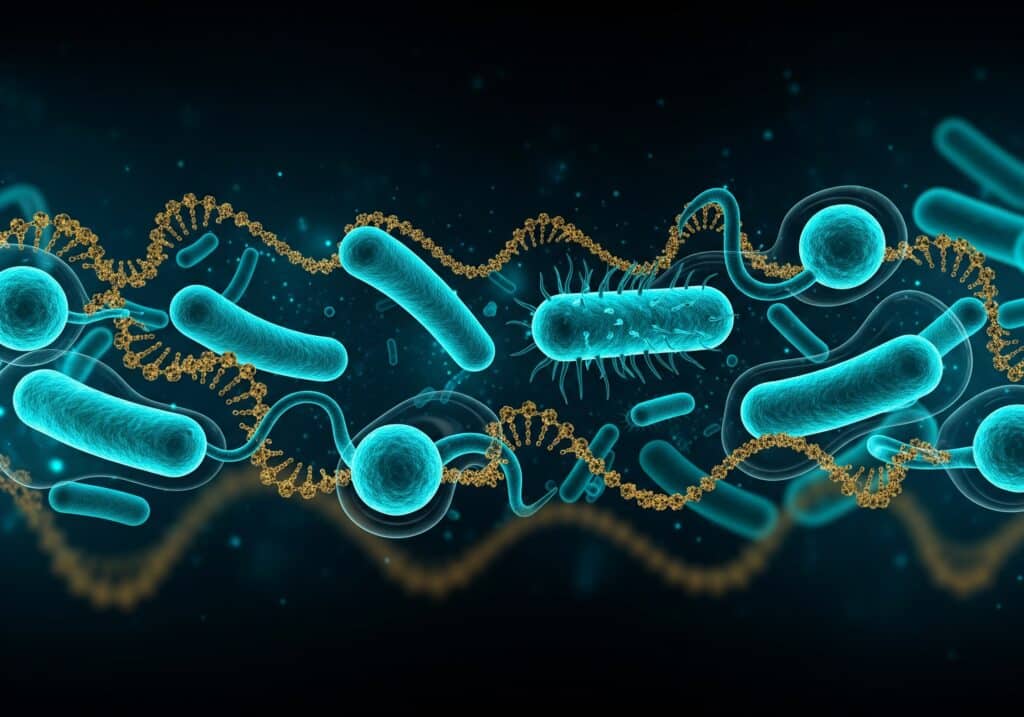The recent decision T 1065/23 of the Boards of Appeal related to the patentability of product-by-process claims. The decision confirmed that for such claims, the key question for both novelty and inventive step is whether the claimed process imparts unique and non-obvious properties to the final product. The decision thus also confirms that once a patent is granted, an opponent cannot simply object to the choice of claim format. However, the case is a curiosity, given that it appears the Patentee may also have simply defined the product per se in addition to the product-by-process, but chose not to.
Legal background: Product-by-process claims
Product-by-process claims define a product by reference to its method of manufacture. This claim format is permissible at the EPO, but it comes with specific requirements for patentability, particularly concerning novelty. The established case law, notably decision T 0150/82, dictates that the patentability of a product defined by its manufacturing process is determined not by the novelty of the process itself, but by the properties of the product obtained. If the product is identical to a known product, the claim is not novel, even if the process used to make it is new and inventive. For the process features to confer novelty, they must cause the final product to possess different, identifiable properties compared to the prior art.
The case law with respect to product-by-process claims contrasts with the law relating to claims to a process per se. Under Article 64(2) EPC, the scope of protection for a patented process extends to the products directly obtained by that process. By contrast, a product-by-process claim is a claim to the product per se. The patentability of the invention hinges on the product’s characteristics, not the process’s novelty.
A further layer of complexity in the law on product-by-process claims arises in opposition proceedings. An opponent may wish to argue that a product-by-process claim is improper because the product could have been defined by its structural or functional characteristics, which is a requirement for the allowability of a product-by-process claim during examination (EPO Guidelines for Examination, F-IV-4.12). However, this is considered an objection to a lack of clarity under Article 84 EPC. The Enlarged Board of Appeal in G 3/14 clarified that an objection for lack of clarity cannot be raised against a granted claim in opposition proceedings. The allowability of a particular claim format, therefore, cannot be challenged on this basis post-grant.
Case background: Pea protein extract
T 1065/23 concerned a European patent relating to both a method for extracting pea protein (EP3071045 B1). According to the specification, the properties of protein extracts, such as their solubility and viscosity, are heavily influenced by the extraction method. The invention thus aimed to provide a method that produces pea protein extracts with a combination of low solubility, low viscosity, and low gel strength, making them particularly useful in applications like bakery and wine filtering.
The claims on appeal included a process claim (claim 1) and a product-by-process claim (claim 10). A product claim added at opposition was not included in the claims of the Main Request on appeal. Claim 1 specified a multi-step method, including providing an aqueous composition of pea proteins, isolating them to form a slurry at a pH between 4.0 and 5.8, and then subjecting this slurry to a specific heat treatment with defined temperature and time ranges. Claim 10 was directed to the “Pea protein extract obtainable by the method according to any one of claims 1 to 9”.
The novelty and clarity of product-by-process claims
On appeal, the Opponent argued that the product-by-process format of claim 10 was impermissible because the resulting product could have been defined by its physical properties, such as its solubility, gel strength, and viscosity. Furthermore, the Opponent contended that both the method and the product lacked novelty over several prior art documents describing pea protein extraction.
In response, the Patentee submitted that the product-by-process format of claim 10 was allowable and that the specific combination of steps in their method, particularly the heating of the slurry at a specific isoelectric pH range, imparted unique physicochemical properties to the resulting protein extract. The Patentee provided evidence from the patent itself and further experimental tests to show that their product had a distinct profile of low solubility, viscosity, and gel strength, which translated to superior performance in food applications. This unique combination of properties, the Patentee argued, rendered the product novel and inventive.
The Board of Appeal ultimately agreed with the Patentee, setting aside the Opposition Division’s decision and remitting the case with the order to maintain the patent on the basis of Auxiliary Request 1. On the issue of the product-by-process, the Board of Appeal confirmed the established case law that an objection to the format of a claim itself is not a valid ground for opposition. The Board of Appeal noted objecting to the claim format is a clarity issue, which is not open to examination in opposition proceedings for granted claims:
“The mere fact that claim 10 is drafted as a product-by-process, despite the fact that the claimed product could be satisfactorily defined by reference to its composition, structure or other testable parameter, is not a ground for opposition...considering that claim 10 is a granted claim, its format cannot be objected to on the ground that it is drafted in the product-by-process format or that it lacks clarity (G 3/14).“
On novelty, the Board of Appeal found that neither the method of claim 1 nor the product of claim 10 was anticipated by the prior art. For the Board of Appeal, the prior art documents did not disclose the specific sequence of isolating the protein into a slurry at the claimed pH range before subjecting it to the specific heating regime. For the product-by-process claim, the Board of Appeal accepted the Patentee’s argument that the process imparted special characteristics to the product that went beyond just low solubility. The Board of Appeal found that the patent provided credible evidence that the resulting extract possessed a unique combination of low nitrogen solubility, low gel strength, and low viscosity. The Board of Appeal further noted that the Opponent had provided no evidence to the contrary. The Board of Appeal thus found the claims novel.
Arbitrary versus obvious selections
The Board of Appeal further dismissed the inventive step argument, rejecting the Opponent’s argument that the selection of the claimed pH range was an arbitrary and therefore obvious selection. The Board of Appeal rejected this argument, finding that the selection was not arbitrary because the evidence showed a clear technical advantage when operating within the claimed range compared to outside it. The Board of Appeal reasoned that as long as an effect is achieved within the claimed range that goes beyond the prior art, the specific choice of the range’s endpoints is not a reason to find the subject-matter obvious. The claims were therefore also found inventive.
Analysis
The decision in T 1065/23 confirms the EPO’s established approach to product-by-process claims at the EPO. The Board of Appeal applied without question the guidance from G 3/14 that the format of a granted claim is not a valid ground for opposition.
This case contrasts with the decision in T 1869/19. T 1869/19 related to product-by-process claims for a medical device. The claims failed in this case because the patentee could not convince the Board of Appeal that the process steps necessarily resulted in a product with novel properties. The Patentee in T 1065/23, by contrast, was able to point to data that convincingly demonstrated for the Board of Appeal the link between the product and the process used to make the product. This case also confirms the difficulty of arguing against the mere format of a granted product-by-process claim as an attack at opposition.
However, cases such as that of T 1065/23 are a curiosity. The question the case raises, from the commercial perspective, is why would you choose to protect only process and product-by-process, if it is possible to protect the product?. Whilst rejecting the claim format objection, the Board of Appeal specifically concluded in this case that the product could have been protected as a product claim as opposed to a product-by-process claim. However, it appears that the Patentee deleted this claim in response to a novelty objection.
A product claim, which defines a product by its structure or composition, will generally offer significantly more robust protection than a product-by-process claim. The primary benefit of a product claim is that it covers the product itself, regardless of how it was made. This makes enforcement of the patent far more straightforward. In contrast, a product-by-process claim can be difficult to enforce because the patentee bears the burden of proving that an allegedly infringing product was, in fact, obtainable by the claimed process. This can be a major challenge in certain fields, as competitors’ manufacturing methods are often closely guarded trade secrets, making infringement difficult to detect and prove. Furthermore, product-by-process claims can be overly narrow, as applicants are often required to limit the claim to very specific process parameters. In this case, the granted patent and the main request on appeal did not include a product claim following a finding at opposition that the product claim lacked novelty. However, given that the novelty of a product-by-process is dependent on the novelty of the product, the arguments for the novelty or lack of a product claim and and a corresponding product-by-process claim, are the same.
Are you wondering how best to protect you innovation with the correct patent protection that will provide value later on? Contact us today to hear how we can help you secure robust and relevant IP.
Stay up to date with the latest updates in pharma IP law by subscribing to our newsletter.
Further reading
- Defining a medical device as a product-by-process (T 1869/19)
- Reference to a hybridoma does not limit a product-by-process antibody claim (T 0032/17)
- Beyond the process: Securing robust IP protection for cell therapies
- The benefits and pitfalls of drug manufacturing IP (T 2543/22)
Originally posted on IPKat.








